
The House of Fugger is a German family that was historically a prominent group of European bankers, members of the fifteenth- and sixteenth-century mercantile patriciate of Augsburg, international mercantile bankers, and venture capitalists. Alongside the Welser family, the Fugger family controlled much of the European economy in the sixteenth century and accumulated enormous wealth. The Fuggers held a near monopoly on the European copper market.
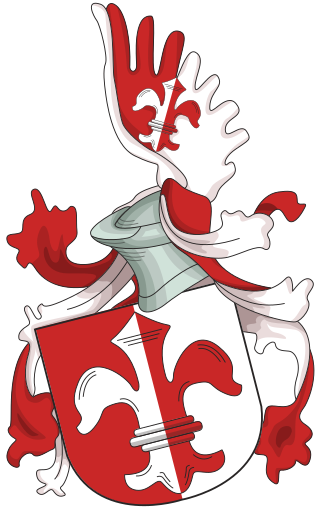
Welser was a German banking and merchant family, originally a patrician family based in Augsburg and Nuremberg, that rose to great prominence in international high finance in the 16th century as bankers to the Habsburgs and financiers of Charles V, Holy Roman Emperor. Along with the Fugger family, the Welser family controlled large sectors of the European economy, and accumulated enormous wealth through trade and the German colonization of the Americas, including slave trade. The family received colonial rights of the Province of Venezuela from Charles V, who was also King of Spain, in 1528, becoming owners and rulers of the South American colony of Klein-Venedig, but were deprived of their rule in 1546. Philippine Welser (1527–1580), famed for both her learning and her beauty, was married to Archduke Ferdinand, Emperor Ferdinand I's son.

The German Renaissance, part of the Northern Renaissance, was a cultural and artistic movement that spread among German thinkers in the 15th and 16th centuries, which developed from the Italian Renaissance. Many areas of the arts and sciences were influenced, notably by the spread of Renaissance humanism to the various German states and principalities. There were many advances made in the fields of architecture, the arts, and the sciences. Germany produced two developments that were to dominate the 16th century all over Europe: printing and the Protestant Reformation.
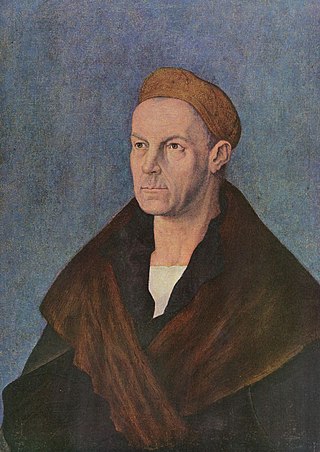
Jakob Fuggerof the Lily, also known as Jakob Fuggerthe Rich or sometimes Jakob II, was a major German merchant, mining entrepreneur, and banker. He was a descendant of the Fugger merchant family located in the Free Imperial City of Augsburg. He was born and later also elevated through marriage to Grand Burgher of Augsburg. Within a few decades, he expanded the family firm to a business operating in all of Europe. He began his education at the age of 14 in Venice, which also remained his main residence until 1487. At the same time, he was a cleric and held several prebends. Even though he lived in a monastery, Jakob found time to study the history of investment in early Asian markets. American journalist Greg Steinmetz has estimated his overall wealth to be around $400 billion in today's money, equivalent to 2% of the GDP of Europe at that time.

St. James' Church is a former collegiate church in Antwerp, Belgium. The church is built on the site of a hostel for pilgrims to Santiago de Compostela. The present building is the work of the Waghemakere family and Rombout Keldermans, in Brabantine Gothic style. The church contains the grave of Peter Paul Rubens in the eastern chapel.

The Triumphal Arch is a 16th-century monumental woodcut print commissioned by the Holy Roman Emperor Maximilian I. The composite image was printed on 36 large sheets of paper from 195 separate wood blocks. At 295 × 357 centimetres, it is one of the largest prints ever produced and was intended to be pasted to walls in city halls or the palaces of princes. It is a part of a series of three huge prints created for Maximilian, the others being a Triumphal Procession which is led by a Large Triumphal Carriage ; only the Arch was completed in Maximilian's lifetime and distributed as propaganda, as he intended. Together, this series has been described by art historian Hyatt Mayor as "Maximilian's program of paper grandeur". They stand alongside two published biographical allegories in verse, the Theuerdank and Weisskunig, heavily illustrated with woodcuts.

The Van de Werve family is one of the oldest Belgian noble families from Antwerp that is still in existence.
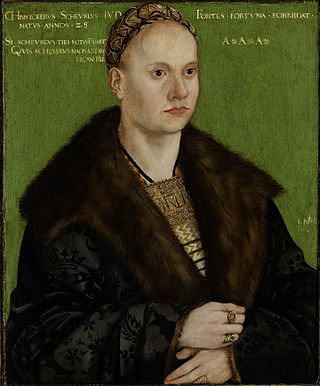
Christoph Scheurl or von Scheurl was a German jurist, diplomat and humanist who became famous for arranging a humanistic friendship between Johann Eck and Martin Luther.

The House of Ursel is the name of an old Belgian noble family of German origin. The Head of the House is styled as Duke of Ursel, while other members are styled as Count/Countess of Ursel.

Georg Fuggervon der Lilie (1453–1506) was a German merchant of the Fugger dynasty.

The Imhoff, Imhof or Im Hof family is a noble patrician family that belonged to the wealthy trading dynasties and ruling oligarchy in the Free Imperial City of Nuremberg during its Golden Age in the Renaissance. The Imhoff Trading Company was one of the most important European traders between the 15th and 17th centuries. It maintained branches and trade connections throughout Europe and financed European courts with loans.
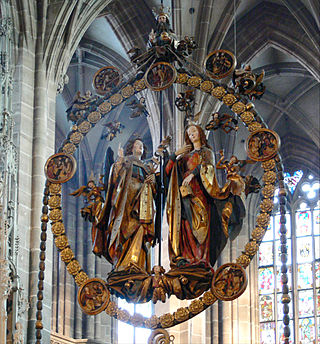
Angelic Salutation is an assemblage of life-sized limewood sculptures celebrating the Annunciation by the late-Gothic German artist Veit Stoss. It was commissioned in 1517 by Anton II Tucher and completed the following year. Tucher was a high ranking official in Nuremberg in southern Germany, and donated the work to the medieval church of St. Lorenz in Nuremberg, where it still freely suspended on a metal chain in the center of the choir, facing the high altar.

The House of Schetz or Schetz de Grobbendonk, originally House von Schetzenberg is a German Noble House. Most famous is the Flemish branch named Schetz, one of whose members became the first duke of Ursel.

Ladislaus / Lanseloet', sometimes Lanschot van Ursele or Lancelot II of Ursel (1499–1573), Knight, was Mayor of Antwerp.

Brimeu is a noble family, some members belonging to the Flemish aristocracy. Brimeux, previously in Flanders, is now in France.
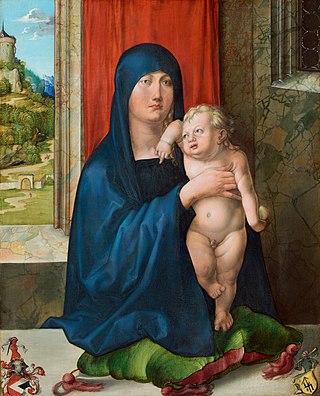
Haller von Hallerstein is a noble patrician family from the Free Imperial City of Nuremberg which belonged to the wealthy ruling oligarchy during Nuremberg's Golden Age in the Late Middle Ages and the Renaissance.

The Pfinzing von Henfenfeld were one of the oldest patrician families in the imperial city of Nuremberg. They are first mentioned in a document in 1233 and were represented in the inner council from the beginning of the council records in 1274 until their extinction in 1764. This made them the oldest Nuremberg council family. According to the dance Statute of 1521 belonged to the twenty old lines eligible for Ratsfähigen. In 1764 the male line died out.

The Patriciate of the Imperial City of Nuremberg, the families entitled to the Inner Council, represented the actual center of power in Nuremberg until the French occupation in 1806.






































